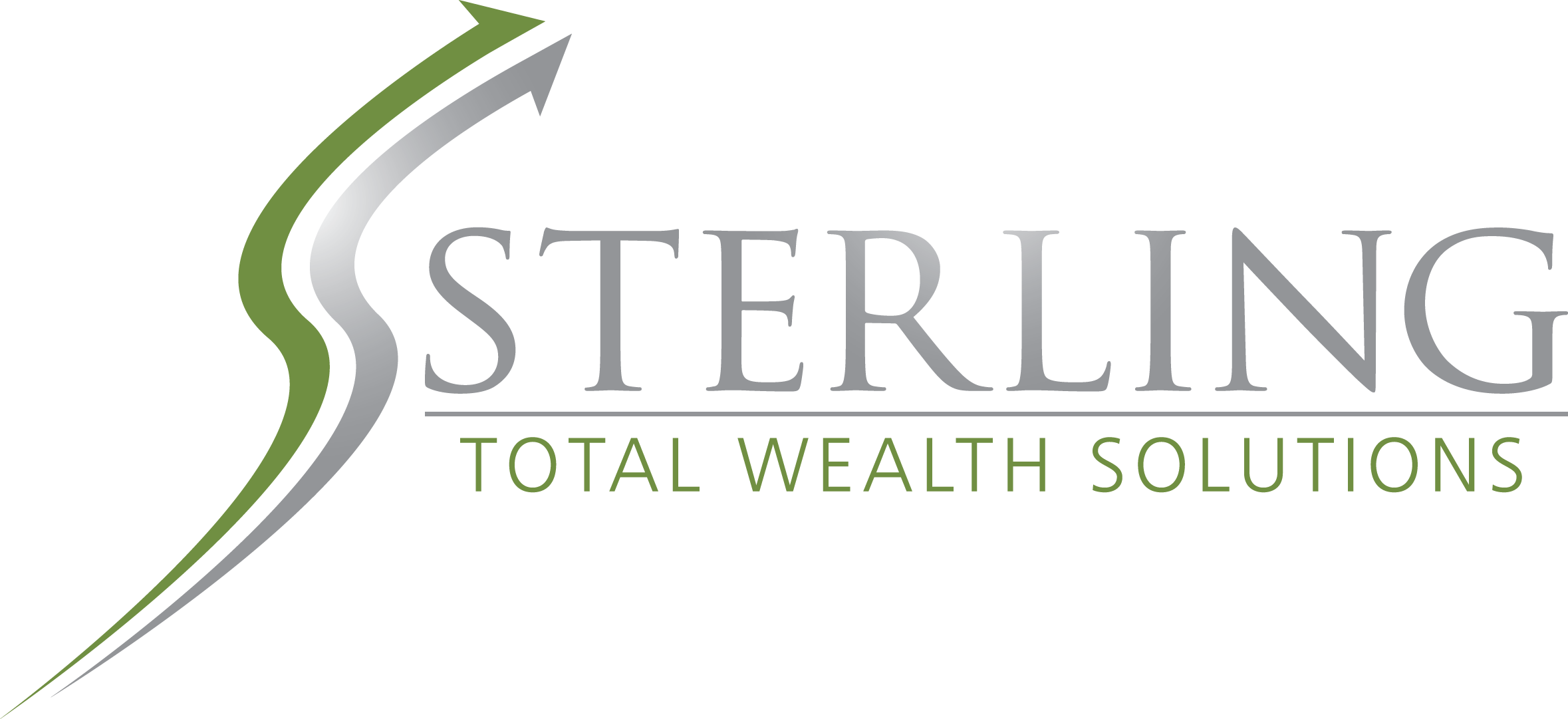In this month’s recap: The Fed cuts interest rates, the price of oil spikes, and trade negotiations between the U.S. and China are rescheduled.
Monthly Economic Update
Monthly Economic Update | Presented by Sterling Wealth Advisors | October 2019
THE MONTH IN BRIEF
September brought an economic event that was widely expected: a quarter-point cut in short-term interest rates by the Federal Reserve. It also brought an attack on two of the world’s largest oil fields that threatened to dent global crude output. A resumption of U.S.-China trade talks was scheduled for October, and White House officials decided to delay some planned tariff increases. Clear signals of an economic slowdown emerged from both the eurozone and China; some of the key U.S. economic indicators looked much better by comparison. While all these events transpired, the S&P 500 gained 1.72% for the month.1
DOMESTIC ECONOMIC HEALTH
As futures traders widely anticipated, the Federal Reserve lowered the benchmark interest rate by 0.25% on September 18. The 7-3 vote of the Federal Open Market Committee left the federal funds rate in a range of 1.75%-2.00%. As the less-than-unanimous vote hinted, Fed policymakers shared little consensus about the outlook for rates for the balance of the year. The Fed also released its latest dot-plot chart (a Fed tool that projects the cost of borrowing money in the future). According to the new dot-plot forecast, ten Fed officials saw no more cuts for the rest of the year, but seven others felt at least one more cut would happen before 2020.2
On September 14, two of the world’s largest oil producing facilities were hit by drone attacks. The damage to these Saudi Arabian plants reduced daily global crude output by about 5% and sent the price of oil soaring when commodities markets opened the following Monday. The price of West Texas Intermediate (WTI) crude, the U.S. benchmark, jumped more than $8 during the September 16 trading session to close at $62.90 on the New York Mercantile Exchange (NYMEX). The price soon fell, however. On September 30, a barrel of WTI crude was $54.20.3,4
Trade representatives from the U.S. and China were scheduled to restart negotiations on October 10. At mid-month, White House officials said that a planned 5% increase in tariffs on certain Chinese imports would be postponed from October 1 to October 15 to honor a request made by Chinese Vice Premier Liu He. Late in the month, stocks fell on a rumor that the White House was considering limits on U.S. investment in Chinese companies.5,6
Employers added 130,000 net new workers in August, and only 96,000 were private-sector hires. The main jobless rate remained at 3.7%, but the U-6 rate, which also counts the underemployed, rose from 7.0% to 7.2%. Annualized wage growth stayed at 3.2%.7
A much-watched gauge of U.S. manufacturing, the Institute for Supply Management’s monthly Purchasing Managers Index, fell below 50 in August. That news broke early in September, and the number (49.1) was important because any reading below 50 signals sector contraction. Meanwhile, ISM’s Non-Manufacturing PMI came in at 56.4 in August, showing expansion in the U.S. service sector for the 115th straight month. That 56.4 was its best mark since May.8
Data concerning consumers was mixed. Retail sales rose another 0.4% in August, bringing the year-over-year advance to 4.1%. Personal spending increased 0.1% in the eighth month of the year, though personal incomes rose 0.4%. The Conference Board’s September Consumer Confidence Index fell to 125.1 in September (it was at 134.2 in August); the final September University of Michigan Consumer Sentiment Index rose, month-over-month, from 89.8 to 93.2.9
Overall consumer prices ticked up 0.1% in August, leaving annualized inflation at just 1.7%. Core consumer prices (minus food and fuel costs) were up 2.4% across the 12 months ending in August, though.9
GLOBAL ECONOMIC HEALTH
Last month, the European Central Bank (ECB) announced that it was starting another asset-purchase campaign to try and stimulate the eurozone economy, with no end date in mind. Outgoing ECB president Mario Draghi (soon to be succeeded by longtime International Monetary Fund chair Christine Lagarde) noted that the eurozone economy might be in for a “prolonged sag.” The Manufacturing PMI for the eurozone dropped to 50.4 in September, near the 50-mark, delineating sector contraction from sector expansion. Germany’s Factory PMI sank to 41.4 in September, a 10-year low.10,11
The United Kingdom’s highest court ruled that Prime Minister Boris Johnson’s summer decision to suspend Parliament for five weeks was unlawful. Despite calls for him to resign, Johnson refused to step down after the September 24 ruling, while maintaining that Brexit would still happen by Halloween.12
China’s year-over-year industrial output slowed to a 4.4% pace in August, down from what was already a 17-year low of 4.8% in July. Economists polled by Reuters thought the August number would be 5.2%. The nation’s annual pace of retail sales also declined in August to 7.5%. Oxford Economics forecasts a 2019 gross domestic product of just 6.1% for China, declining to 5.7% in 2020.13
WORLD MARKETS
Along with the S&P 500, many foreign indices posted September gains – in fact, it is hard to find a September loss for any consequential benchmark. In the Americas, Brazil’s Bovespa rose 3.90%; Argentina’s Merval, 17.35%. Canada’s TSX Composite advanced 1.35%. Spain’s IBEX 35 improved 4.90%; France’s CAC 40, 3.60%. The regional FTSE Eurofirst 300 index gained 3.51%, and the FTSE 100 index, tracking stocks in the United Kingdom, rose 2.79%.14
Turning to the Asia-Pacific region, the Nikkei 225 jumped 5.08% in September. South Korea’s Kospi and India’s Nifty 50 indices respectively added 4.84% and 4.09%. India’s other equity benchmark, the Sensex, rose 3.57%. Taiwan’s TSE 50 improved 2.71%, Australia’s All Ordinaries, 1.53%; Hong Kong’s Hang Seng, 1.43%; China’s Shanghai Composite, 0.66%. The MSCI EAFE index, a benchmark for developed stock markets outside the U.S., rose 2.54%.14,15
COMMODITIES MARKETS
Oil actually lost 1.76% across September, even with its mid-month price leap. WTI crude ended the month at $54.20 on the New York Mercantile Exchange (NYMEX). Crude at least outperformed unleaded gasoline, which fell 2.47%. Heating oil, on the other hand, rose 3.70%; natural gas improved 2.11%.4
With winter approaching, important crops advanced across the board: cocoa gained 15.22% for the month; wheat, 10.11%; corn, 8.40%; coffee, 7.77%; soybeans, 5.45%; sugar, 3.50%; cotton, 3.13%.4
The U.S. Dollar Index rose 0.60% in September to a month-ending close of 99.39. Silver dropped 6.63% for the month to a September 30 NYMEX close of $17.08. Gold also had a down September, losing 3.19% to a month-ending value of $1,479.40. Palladium futures retreated 5.65% for the month, but copper futures added 0.93%.4,16
REAL ESTATE
Between late August and late September, mortgage rates rose. Freddie Mac’s September 26 Primary Mortgage Market Survey showed an average interest rate of 3.64% for the 30-year, fixed-rate mortgage and 3.16% for the 15-year, fixed-rate mortgage. Back on August 29, the 30-year FRM bore an average interest rate of 3.58%; the 15-year FRM, an average interest of 3.06%.17
30-year and 15-year fixed rate mortgages are conventional home loans generally featuring a limit of $484,350 ($726,525 in high-cost areas) that meet the lending requirements of Fannie Mae and Freddie Mac, but they are not mortgages guaranteed or insured by any government agency. Private mortgage insurance, or PMI, is required for any conventional loan with less than a 20% down payment.
Existing home sales were up 1.3% in August, according to the National Association of Realtors. (There was a 2.5% gain in July.) The NAR also reported a 1.6% gain for pending home sales in the eighth month of the year. There was more good news regarding home sales: Census Bureau said that new home buying increased 7.1% in August.9
In another healthy sign for the real estate sector, August saw a major jump in housing starts. They rose 12.3%, by the estimation of the Census Bureau. Building permits were up 7.7%.9
TIP OF THE MONTH

One school of household money management says that you should strive to pay down your smallest-balance debt first. Doing that frees up money to pay off larger balances.
LOOKING BACK, LOOKING FORWARD
On Wall Street, the turbulence of August gave way to a bit more stability in September, and equities made strides. The S&P 500, Dow Jones Industrial Average, and Nasdaq Composite all were positive for the month. Their closing levels, on September 30: S&P 500, 2,976.73; Dow, 26,916.83; Nasdaq, 7,999.34. The S&P Smallcap 600 advanced 3.15%.16
|
MARKET INDEX |
Y-T-D CHANGE |
1-MO CHANGE |
2018 |
|
DJIA |
+15.39 |
+1.95 |
-5.63 |
|
NASDAQ |
+20.56 |
+0.46 |
-3.88 |
|
S&P 500 |
+18.74 |
+1.72 |
-6.24 |
|
BOND YIELD |
9/30 RATE |
1 MO AGO |
1 YR AGO |
|
10 YR TREASURY |
1.68 |
1.50 |
3.09 |
Sources: barchart.com, wsj.com, treasury.gov – September 30, 201916,18,19
Indices are unmanaged, do not incur fees or expenses, and cannot be invested into directly. These returns do not include dividends. 10-year Treasury yield = projected return on investment, expressed as a percentage, on the U.S. government’s 10-year bond.
The next earnings season is less than two weeks away. Earnings growth is one of the pillars supporting the stock market, and if earnings are strong and forecasts are solid, that may help to dispel, or at least ease, anxieties on Wall Street about a slowing economy. Weak earnings would invite questions about whether companies are going to keep investing and hiring at their present pace.
QUOTE OF THE MONTH

“Success is that old ABC – ability, breaks, and courage.”
CHARLES LUCKMAN
UPCOMING RELEASES
Looking at the rest of October, here are the consequential scheduled economic news items: the Department of Labor’s monthly jobs report (10/4), September wholesale inflation (10/8), the minutes from September’s Federal Reserve meeting (10/9), September consumer inflation (10/10), the preliminary October Consumer Sentiment Index from the University of Michigan (10/11), September retail sales and the next Federal Reserve Beige Book (10/16), the Census Bureau’s monthly snapshot of U.S. construction activity (10/17), September existing home sales (10/22), September new home sales and durable goods orders (10/24), the month’s final University of Michigan Consumer Sentiment index (10/25), the Conference Board’s October Consumer Confidence Index, plus September pending home sales figures (10/29), a Federal Reserve policy statement and press conference (10/30), and September personal spending figures from the Bureau of Economic Analysis (10/31).
THE MONTHLY RIDDLE

I am the beginning of the end, the end of every place. I am the beginning of eternity, the end of time and space. What am I?
LAST MONTH’S RIDDLE: During what month do people sleep the least, on average?
ANSWER: February; after all, it is the shortest month.
Securities offered through Registered Representatives of Cambridge Investment Research, Inc., a Broker/Dealer, Member FINRA/SIPC. Advisory services offered through Cambridge Investment Research Advisors, Inc., a Registered Investment Advisor. Sterling Wealth Advisors and Cambridge are not affiliated.
To learn more about Sterling Wealth Advisors, visit us on the web at www.sterlingwealthadvisorstx.com
Know someone who could use information like this?
Please feel free send us their contact information via phone or email. (Don’t worry – we’ll
request their permission before adding them to our mailing list.)
This material was prepared by MarketingPro, Inc., and does not necessarily represent the views of the presenting party, nor their affiliates. The information herein has been derived from sources believed to be accurate. Please note – investing involves risk, and past performance is no guarantee of future results. Investments will fluctuate and when redeemed may be worth more or less than when originally invested. This information should not be construed as investment, tax or legal advice and may not be relied on for the purpose of avoiding any Federal tax penalty. This is neither a solicitation nor recommendation to purchase or sell any investment or insurance product or service, and should not be relied upon as such. All market indices discussed are unmanaged and are not illustrative of any particular investment. Indices do not incur management fees, costs and expenses, and cannot be invested into directly. All economic and performance data is historical and not indicative of future results. The Dow Jones Industrial Average is a price-weighted index of 30 actively traded blue-chip stocks. The NASDAQ Composite Index is a market-weighted index of all over-the-counter common stocks traded on the National Association of Securities Dealers Automated Quotation System. The Standard & Poor’s 500 (S&P 500) is a market-cap weighted index composed of the common stocks of 500 leading companies in leading industries of the U.S. economy. The Russell 2000 Index measures the performance of the small-cap segment of the U.S. equity universe. The CBOE Volatility Index® (VIX®) is a key measure of market expectations of near-term volatility conveyed by S&P 500 stock index option prices. NYSE Group, Inc. (NYSE:NYX) operates two securities exchanges: the New York Stock Exchange (the “NYSE”) and NYSE Arca (formerly known as the Archipelago Exchange, or ArcaEx®, and the Pacific Exchange). NYSE Group is a leading provider of securities listing, trading and market data products and services. The New York Mercantile Exchange, Inc. (NYMEX) is the world’s largest physical commodity futures exchange and the preeminent trading forum for energy and precious metals, with trading conducted through two divisions – the NYMEX Division, home to the energy, platinum, and palladium markets, and the COMEX Division, on which all other metals trade. The SSE Composite Index is an index of all stocks (A shares and B shares) that are traded at the Shanghai Stock Exchange. The IBEX 35 is the benchmark stock market index of the Bolsa de Madrid, Spain’s principal stock exchange. The FTSE 100 Index is a share index of the 100 companies listed on the London Stock Exchange with the highest market capitalization. The DAX 30 is a Blue-Chip stock market index consisting of the 30 major German companies trading on the Frankfurt Stock Exchange. The Bovespa Index is a gross total return index weighted by traded volume & is comprised of the most liquid stocks traded on the Sao Paulo Stock Exchange. The MSCI Emerging Markets Index is a float-adjusted market capitalization index consisting of indices in more than 25 emerging economies. The FTSEurofirst 300 Index comprises the 300 largest companies ranked by market capitalisation in the FTSE Developed Europe Index. The Hang Seng Index is a free float-adjusted market capitalization-weighted stock market index that is the main indicator of the overall market performance in Hong Kong. The CAC-40 Index is a narrow-based, modified capitalization-weighted index of 40 companies listed on the Paris Bourse. The S&P/TSX Composite Index is an index of the stock (equity) prices of the largest companies on the Toronto Stock Exchange (TSX) as measured by market capitalization. The Mexican Stock Exchange, commonly known as Mexican Bolsa, Mexbol, or BMV, is the only stock exchange in Mexico. The Nifty 50 (NTFE 50) is a well-diversified 50-stock index accounting for 13 sectors of the Indian economy. It is used for a variety of purposes such as benchmarking fund portfolios, index-based derivatives and index funds. The BSE SENSEX (Bombay Stock Exchange Sensitive Index), also-called the BSE 30 (BOMBAY STOCK EXCHANGE) or simply the SENSEX, is a free-float market capitalization-weighted stock market index of 30 well-established and financially sound companies listed on the Bombay Stock Exchange (BSE). Nikkei 225 (Ticker: ^N225) is a stock market index for the Tokyo Stock Exchange (TSE). The Nikkei average is the most watched index of Asian stocks. The Korea Composite Stock Price Index or KOSPI is the major stock market index of South Korea, representing all common stocks traded on the Korea Exchange. The FTSE TWSE Taiwan 50 Index consists of the largest 50 companies by full market value and is also the first narrow-based index published in Taiwan. The MICEX 10 Index is an unweighted price index that tracks the ten most liquid Russian stocks listed on MICEX-RTS in Moscow. The MSCI World Index is a free-float weighted equity index that includes developed world markets and does not include emerging markets. The All Ordinaries (XAO) is considered a total market barometer for the Australian stock market and contains the 500 largest ASX-listed companies by way of market capitalization. The US Dollar Index measures the performance of the U.S. dollar against a basket of six currencies. Additional risks are associated with international investing, such as currency fluctuations, political and economic instability and differences in accounting standards. This material represents an assessment of the market environment at a specific point in time and is not intended to be a forecast of future events, or a guarantee of future results. MarketingPro, Inc. is not affiliated with any person or firm that may be providing this information to you. The publisher is not engaged in rendering legal, accounting or other professional services. If assistance is needed, the reader is advised to engage the services of a competent professional.
CITATIONS:
1 – money.cnn.com/data/markets/sandp/ [9/30/19]
2 – reuters.com/article/us-usa-fed/fed-cuts-rates-on-7-3-vote-gives-mixed-signals-on-next-move-idUSKBN1W32H7 [9/18/19]
3 – marketwatch.com/story/us-oils-10-surge-after-saudi-attack-puts-it-on-track-for-the-biggest-daily-gain-in-312-years-2019-09-15 [9/16/19]
4 – money.cnn.com/data/commodities/ [9/30/19]
5 – cnbc.com/2019/09/30/us-stocks-investors-monitor-us-china-trade-impeachment-inquiry.html [9/30/19]
6 – tinyurl.com/y2obyd4e [9/12/19]
7 – nbcnews.com/business/economy/jobs-report-paints-mixed-picture-health-economy-n1050681 [9/6/19]
8 – instituteforsupplymanagement.org/ISMReport/NonMfgROB.cfm?SSO=1 [9/5/19]
9 – investing.com/economic-calendar [9/30/19]
10 – marketwatch.com/story/europe-stocks-cautiously-higher-ahead-of-ecb-meeting-and-easing-trade-war-tensions-2019-09-12 [9/12/19]
11 – ft.com/content/02e97d16-ddd0-11e9-9743-db5a370481bc [9/23/19]
12 – tinyurl.com/y53dzoy5 [9/24/19]
13 – cnn.com/2019/09/16/economy/china-economy-industrial-production/index.html [9/16/19]
14 – markets.on.nytimes.com/research/markets/worldmarkets/worldmarkets.asp [9/30/19]
15 – marketwatch.com/investing/index/990300?countrycode=xx [9/30/19]
16 – barchart.com/stocks/indices?viewName=performance [9/30/19]
17 – freddiemac.com/pmms/archive.html [9/26/19]
18 – markets.wsj.com/us [12/31/18]
19 – treasury.gov/resource-center/data-chart-center/interest-rates/Pages/TextView.aspx?data=yieldAll [9/30/19]
